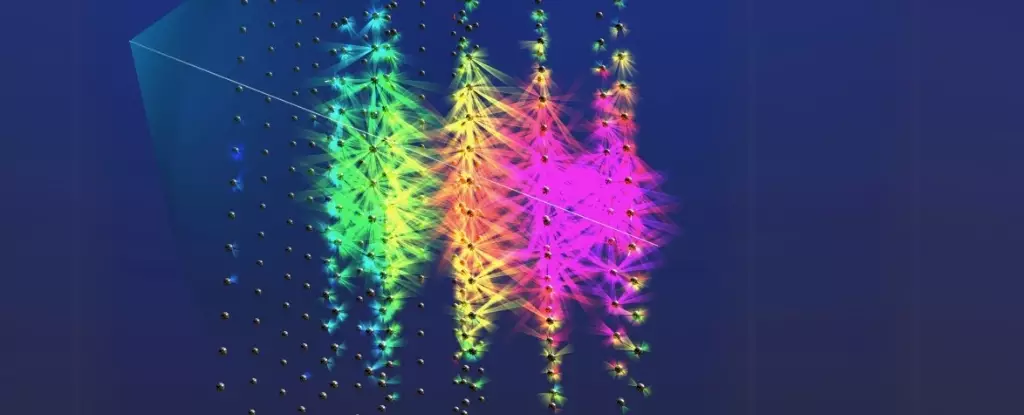Our universe is an intricate tapestry woven from high-energy phenomena, and among its most elusive elements are neutrinos. These elementary particles, which possess a notoriously low interaction rate with matter, are constantly streaming through us, barely noticed. Until recently, detecting these ghostly messengers was nearly impossible, but a groundbreaking event on February 13, 2023, has stunned scientists. An undersea neutrino detector located off Sicily recorded a neutrino with an astonishing energy level, reaching an extraordinary 220 petaelectronvolts (PeV). This remarkable discovery raises intriguing questions about the sources of such immense energies in the cosmos.
Neutrinos typically exert little influence on their surroundings due to their lack of electric charge and minuscule mass. As such, they are commonly produced in massive quantities during cosmic events, yet detecting them requires specialized equipment and methods. The high-energy neutrino detected in February stands as the highest-energy particle ever measured, dwarfing the previous record of 10 PeV.
The detection occurred within the framework of the Cubic Kilometer Neutrino Telescope (KM3NeT), located approximately 3,450 meters below the Mediterranean Sea’s surface. This facility employs an array of 378 individual modules, each equipped with 31 light-sensitive detectors, to capture the faint flashes of light generated by neutrino interactions within water. Specifically, during the incident in question, over 28,000 photons were recorded as particles resulting from the neutrino’s interaction illuminated a vast region of the detector.
So, what could possibly catalyze a neutrino with such extraordinary energy? Scientific discourse has focused on several potential sources that could propel particles to these extreme levels. Notably, astronomical entities like supernovae, gamma-ray bursts, and supermassive black holes are often implicated in fast-tracking particles. A leading candidate for the source of this particular neutrino is a blazar—an exceptionally active supermassive black hole emitting powerful jets of radiation nearly aimed directly toward Earth.
What is particularly noteworthy about this neutrino is the possibility that it might represent the first-ever cosmogenic neutrino detected. This scenario suggests that the neutrino originates from cosmic rays interacting with the relic radiation of the Big Bang, the cosmic microwave background. If confirmed, such a phenomenon would challenge our understanding of high-energy astrophysics and open new avenues of research into particle physics.
The quest to determine the origin of this enigmatic neutrino involves a meticulous investigation of the region of the sky from which it emerged. Researchers explored multiple scenarios, including nearby galactic sources, transient events, and more distant galaxies, but found no fitting candidates in the first three categories. Instead, the evidence points strongly toward extragalactic origins, particularly from active supermassive black holes such as blazars.
In their analysis, scientists identified 12 potential blazars in the vicinity of the neutrino’s trajectory. However, no significant correlation substantiates a direct link yet, meaning that the question of the neutrino’s origin remains largely unresolved. As explained in the published study, “considerable work remains” necessary to substantiate any of these hypotheses definitively.
The detection of this extraordinary neutrino presents a compelling opportunity for further exploration in the fields of astrophysics and cosmology. It challenges not only our understanding of neutrinos but also the more significant forces and events that govern the cosmos. As researchers continue to examine the mechanisms that generate such high-energy particles, answers to foundational questions regarding the universe’s nature may emerge, providing a clearer picture of phenomena that have long remained in shadows.
The cosmos holds mysteries yet to be unraveled, and this record-breaking neutrino detection could very well be a pivotal event—a beacon guiding the way for future explorations into the enigmatic realms of high-energy astrophysics. The scientific community now stands on the precipice of discovery, tasked with the challenge of deciphering the origins and implications of this spectacular cosmic messenger. With continued diligence and innovative research approaches, the answers could redefine our understanding of the universe itself.


Leave a Reply